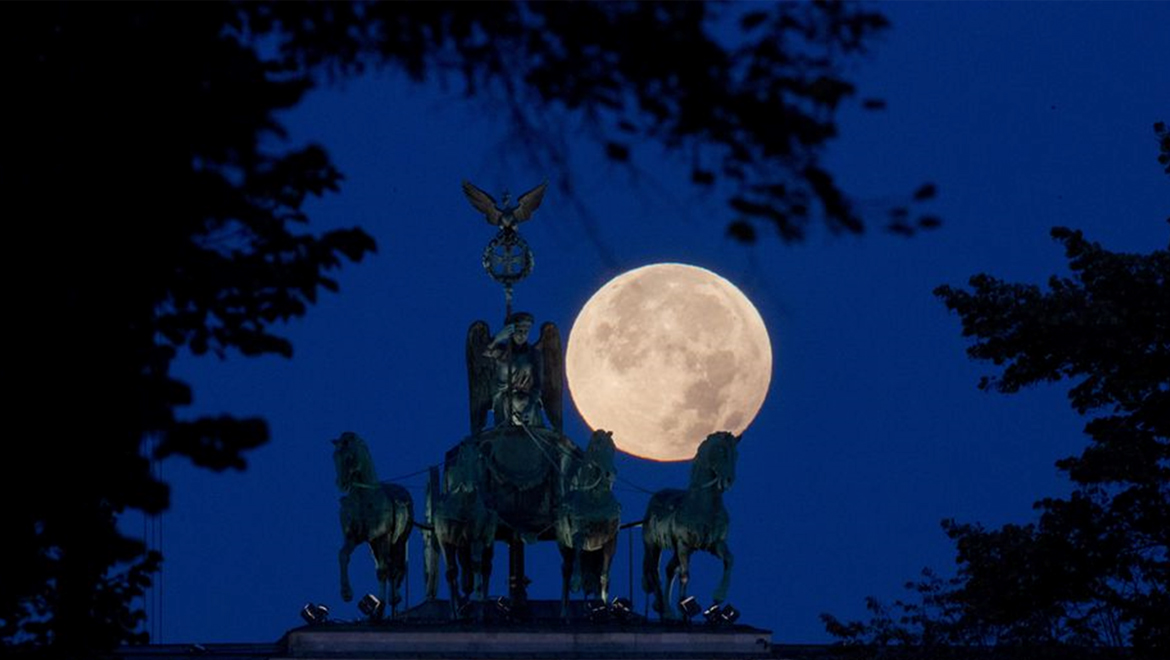Tuesday (Feb 19, 2019) will bring with it, the “super snow moon.” This moon will be at its closest to Earth at 4:07 am EST (0907 GMT).
A 'supermoon' occurs when a full moon coincides with the moon's perigee, or the point in its elliptical orbit at which it is closest to the Earth. This makes the moon appear up to 14 percent larger and 30 percent brighter than usual. We, earthlings, see this event when the moon is full or nearly full and also at its closest point to our planet, along with its slightly elliptical orbit. This close approach is called perigee by astronomers.
The last of these instances was the 'super blood wolf moon,' which occurred in January 2019, when the supermoon coincided with a total lunar eclipse, also known as a blood moon.
The second supermoon of 2019 is scheduled to be on February 19, 2019, during the period of a 'snow moon,' which will be the closest full moon of the year. Following this, on March 21st, the 'worm moon' will reach its full phase about 29 hours after the moon reaches perigee.
This Tuesday night will bring the "super snow moon." Due to a number of nuances in the interactions between the sun, Earth, and moon, the distance between us and each supermoon typically varies a bit. It just so happens that this week's perigee will be about 362 miles (583 kilometers), closer to us than last month's supermoon, according to NASA.
However, one would need to have a remarkably trained eye to notice the difference between each supermoon. In fact, it is hard to clearly see the difference between a regular full moon and a supermoon, which appears up to 14 percent larger and about 30 percent brighter in the sky.
What is Perigee and Apogee, and Why is it Important?
A new moon at perigee is also often referred to as a supermoon. However, this event usually has lesser attention because this kind of moon is invisible from Earth.
A supermoon looks larger than a micro-moon. (Source: www.timeanddate.com)
The moon's orbit around the Earth is not a perfect circle, but elliptical, with one side closer to the planet than the other. As a result, the distance between the moon and the Earth varies throughout the month and year. On average, the distance is about 382,900 kilometers (238,000 miles).
The point on the moon's orbit closest to Earth is called the perigee and the point farthest away is the apogee.
Interestingly, the technical term for a supermoon is known as "perigee syzygy" of the Earth-Moon-Sun system. In astronomy, the term 'syzygy' refers to the straight-line configuration of three celestial bodies, also called the perigee full moon. When the moon is close to the lunar nodes of its path during a syzygy, it causes a total solar eclipse or a total lunar eclipse.
It should be obvious why a February full moon is traditionally called a "snow moon" in the United States -- the second calendar month has historically been filled with fluffy white precipitation more than any other month. The snowfall averages for the Washington DC area for January and February are nearly tied as the snowiest months of the year.
Now, this also means that the 'super snow moon' has a better chance of being blocked from view by snowfall. If that happens, there's still the third and final supermoon of the year, which comes in exactly four weeks, on March 19, 2019.
When Can We See the ‘Snow Moon?’
The snow moon becomes officially full on February 19, 2019, at 10:53 am EST (1553 GMT), and it will be about six hours past perigee. The moon will be at its closest at 4:07 am EST (0907 GMT) on this day. Although the moon will be "super" on the 19th, it will still look pretty full (and super!) to the casual observer the night before and after.
For sky watchers in New York City, the snow moon will rise on February 19th at 5:46 pm, and set the next morning at 7:35 am, local time.
Top Image: Supermoon behind the quadriga of the Brandenburg Gate in Berlin; published on September 28, 2015. (Source: Kay Nietfeld/dpa/Corbis)







No comment